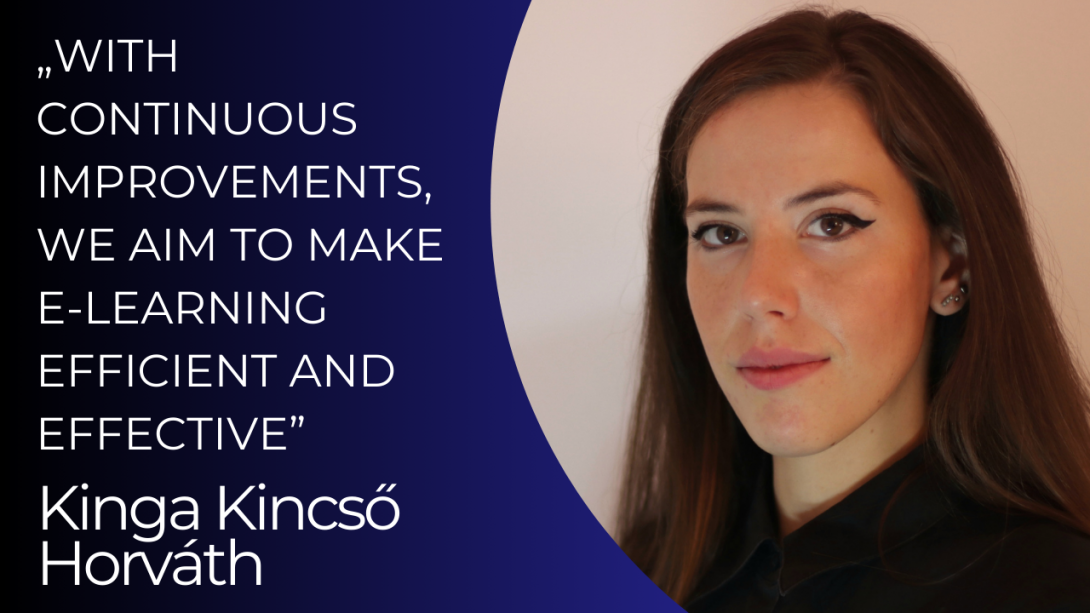
She has been involved in the development of the Centre for Translational Medicine's e-learning system since the beginning, ensuring that scientific training is well-structured and seamless. In December, Kinga Kincső Horváth was named Education Developer of the Month.
Kinga Kincső Horváth and her colleagues are responsible for designing and developing the Centre for Translational Medicine's e-learning platform, involving both IT and educational work. „I am the e-learning administrator and I also contribute to the development of the different courses. I acquired the necessary knowledge at Eszterházy Károly Catholic University, where I studied education planning and digital content development. I started working at CTM at the beginning, when the e-learning system was launched. Since then we have built several systems.” The educator developers regularly receive feedback from students on the e-learning courses, and they can utilize it in their work. There are also follow-up courses to support project-related training, which have also been developed based on feedback.
„This system simplifies the work on several points. For example, administration is entirely done online in the module system, allowing the verification of attendance at class meetings and group meetings. This solution has already worked in the progress report event in January, where participants could register by scanning a QR code on the spot. We are also working on gamification, making learning more experiential. With continuous improvements, we aim to make e-learning efficient and effective.”
The e-learning platform provides easy access to the e-learning courses that students need to complete, for example, the patient registry, clinical trial and biostatistics courses. The module interface also allows students to upload their presentations before group meetings. They receive assignments through this interface, which also simplifies their work. The e-learning system currently has 900 users. This includes not only CTM students, but also Semmelweis University students who take courses. Over the past two summers, Chinese students also completed e-learning courses through this interface, and with its help, they were able to participate in meetings online.
(Szabó Emese)